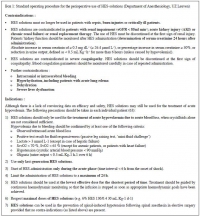31/10/2014
HES: Du côté des belges
Hydroxyethyl Starches in the Perioperative Period. A review on the efficacy and safety of starch solutions
Ghuselings I et All. Acta Anaesth. Belg., 2014, 65, 9-22
Several randomized controlled trials have raised alarming concerns about the safety of hydroxyethyl starches (HES) for the hemodynamic stabilization of critically ill patients. It has been repeatedly demonstrated that the use of HES in patients treated in an intensive care unit was associated with an increased occurrence of serious adverse events, including a higher incidence of renal injury or failure, a higher need for renal replacement therapy (RRT), and (in one study) increased mortality. HES solutions are also widely used in the perioperative period, although high-level evidence on both the efficacy and safety of HES in patients undergoing surgery is sparse. It is unknown to which extent the concerning findings in critically ill patients can be extrapolated to the perioperative setting, where a variety of distinct patient populations is encountered. However, caution and an increased awareness for possible adverse effects of HES solutions in the perioperative setting are warranted. In 2013, the European Medicines Agency (EMA) concluded that the benefits of HES solutions no longer outweigh their risks, and therefore recommended that the marketing authorizations for these medicines be suspended (1). Upon request of some of the marketingauthorization holders (MAH), the EMA re-analyzed its recommendation. After a thorough review of the available data, the Pharmacovigilance Risk Assessment Committee (PRAC) concluded, on November 11th, that the increased risk of mortality and RRT or renal failure associated with the use of hydroxyethyl starch containing medicinal products outweighs their limited clinical benefits in the approved indications, and in any patient population. In June 2013, the U.S. Food and Drug Administration also communicated a serious warning with respect to the use of HES (2). The present (non-systematic) review summarizes the evidence upon which these remarkable recommendations are based. Moreover, current guidelines on the use of HES are quoted.


Les commentaires sont fermés.